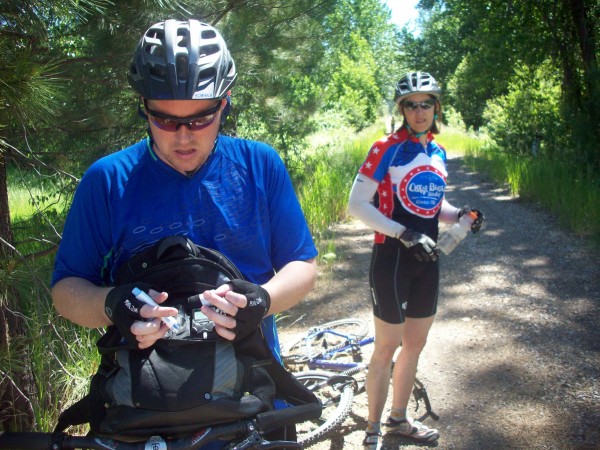Cycling and Diabetes – Type 1 Diabetes
Type 2 Diabetes
Type 1 Cyclists
Type 2 Cyclists
Type 2 diabetic cyclists can’t really be generalized, since type 2 diabetic cyclists typically control their symptoms with food or fluid intake. Each has different needs depending on body and amount of exertion. Type 2 diabetes should always be based on the individual cyclist’s body composition, weight goals, medication regimen, and blood glucose control.
Cycling and Diabetes – How to Make it an Equation that Works
The answers to controlling diabetes in cyclists can only be interpreted as educational only and not serve as specific advice. It’s typically necessary for cyclists with diabetes to work with their own personal health care provider, sports nutritionist, or dietitian to determine their own strategies for daily diet and eating and drinking when on or off the bike.
Food Quality and Quantity
ADA Recommendations
Carbs and Cycling
Insulin Strategy
Pro Cyclists Agree
Get Control
On-Bike Nutrition
“Training rides present the greatest challenge as your energy needs are higher and it will not be convenient to check blood glucose levels,” Monique says. “So your on-bike nutrition strategies can vary depending on the intensity and duration of your ride. The exact timing will depend on your schedule and blood glucose levels, but generally eat one to three hours beforehand, and start with blood glucose levels over 100 mg/dl.”
Glycemic Index
“You can emphasize foods with a lower glycemic index”, say’s Monique. “Some good choices include oatmeal (the long-cooking type not instant), oat bran, muesli (no sugar type), milk, and yogurt, and fruit and fruit juices. Foods with a very high glycemic index include refined cereals, bread, and bagels. The glycemic index of foods does not always follow logic, so look for a good resource list.”
Diabetic Hydration
“You can cut a sports drink concentration by 50 percent, but this may not meet your carbohydrate needs during hard training.” Monique says. “For a drink that has a low glycemic index, you can dilute fruit juice with water, half water and half juice, and consume 16 to 32 ounces every hour for 30 to 60 grams of carbohydrate. For moderate exercise, 15 gm of carbohydrate per hour may be adequate. However, the effect of exercise on blood glucose levels varies greatly from cyclist to cyclist. There are also some beverages on the market that replace fluid and electrolytes, but are very low in carbohydrate and may even contain artificial sweeteners.”
In Summation
Monique sums it up with simple advice: “It would be ideal if you could try to train at the same time everyday and develop a program that consistently works for you. If this is not possible, the results of blood glucose monitoring are the key to determining how you can safely train, and what pre-exercise and on-bike food and fluid strategies are most effective.”
